Is that a Santa Cruz Hightower, Megatower, Nomad or Bronson? At first glance, Santa Cruz’s latest models are difficult to tell apart. But the differences are clearly noticeable on the trail. Read on to find out how the new Hightower rides.
Click here for an overview of the best trail bike in test.

With the introduction of their new suspension concept, Santa Cruz haven’t only revamped the look of their complete lineup but also given it a massive performance boost. With more progressive kinematics, the suspension promises to respond more sensitively while also offering more support. The Hightower features the smart details that Santa Cruz are known for and that make life easier for riders. From the grease nipple on the rocker link, to the simple cable routing, to the extra-large rubber pads to dampen the noise of the chain – Santa Cruz have thought of everything. The bike’s frame and bearings also come with a lifetime guarantee, just like the 29” Reserve carbon wheels fitted to our test bike. As a customer, this gives you much more peace of mind, especially considering the princely sum of € 8,599.00. The build is tuned for performance, leaving nothing to be desired and frankly, we’d expect no less from Santa Cruz. You get a RockShox Lyrik Ultimate RC2 fork paired with a Super Deluxe Ultimate RCT shock as well as SRAM CODE RSC brakes and an X01 Eagle drivetrain, all proven and popular components. However, before hitting the trails on the Hightower, you’ll need a little patience with the set-up. The sag indicator is difficult to read with the shock partially hidden low in the frame.
Santa Cruz Hightower CC X01 Reserve
€ 8,599
Specifications
Fork RockShox Lyrik Ultimate RC2
Rear Shock RockShox Super Deluxe Ultimate RCT
Seatpost RockShox Reverb 170 mm
Brakes SRAM Code RSC 180/180 mm
Drivetrain SRAM X01 Eagle 30/10-50
Stem Race Face Aeffect R 50
Handlebar Santa Cruz AM Carbon 800 mm
Wheelset Santa Cruz Reserve 30 / DT Swiss 350
Tires MAXXIS MINION DHR II EXO 2,4
Technical Data
Size S M L XL XXL
Weight 13,41 kg
Wheelsize 29"
Travel (f/r) 150/140 mm
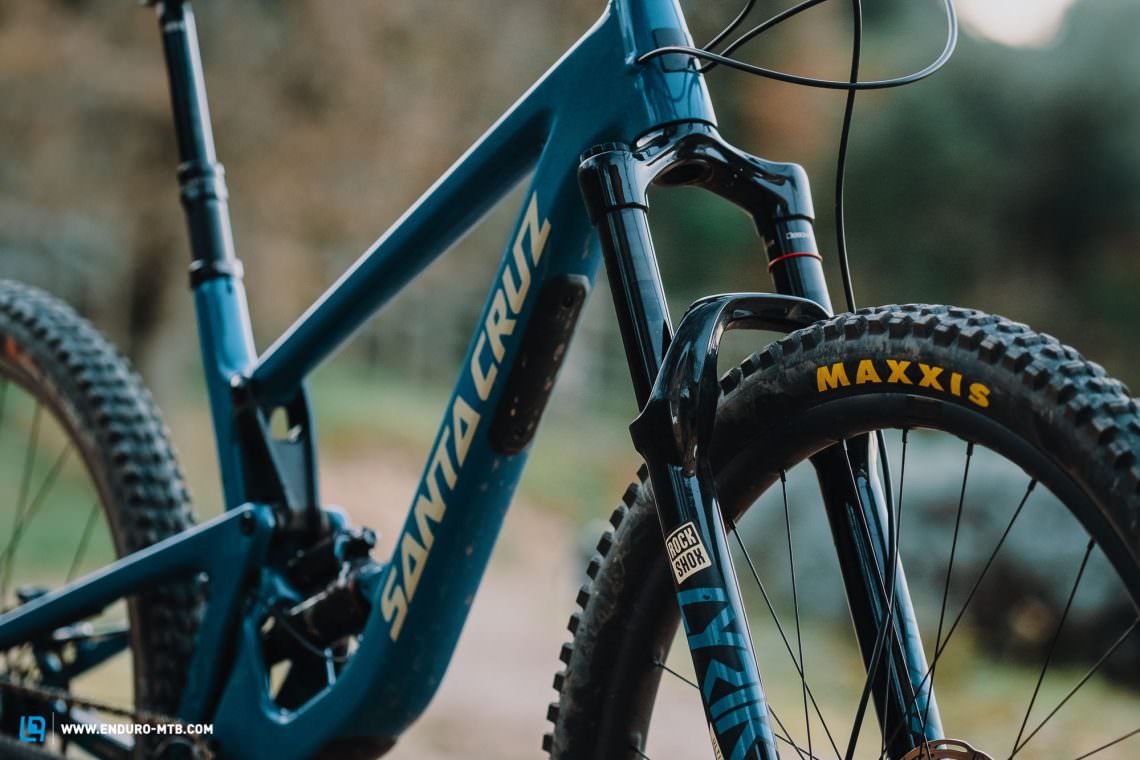
If you like to ride your fork super soft, you may struggle with an imbalance between the front and rear suspension of the Hightower. The supportive rear suspension requires an equally firm fork.
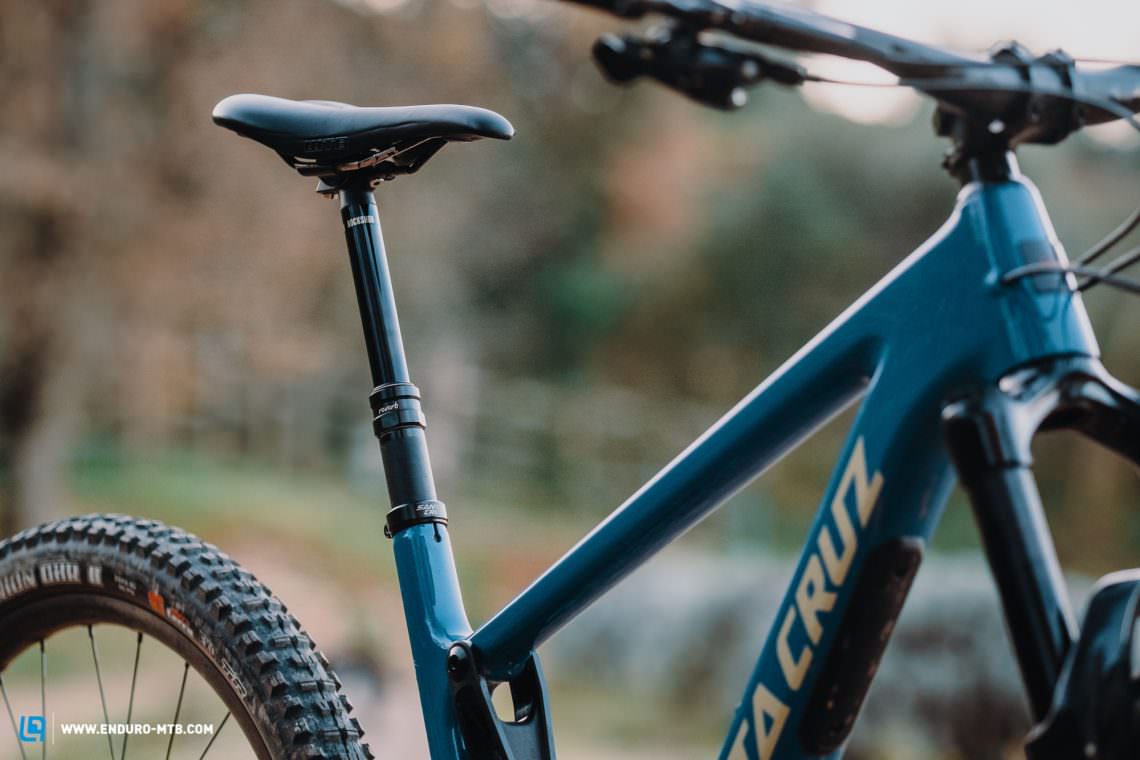
Thanks to the low slung top tube and the 170 mm dropper post, you have plenty of room to move around on the Hightower – awesome!

Santa Cruz know how it’s done: the Hightower is one of the quietest bikes on test. There’s no rattling to distract you from having fun.
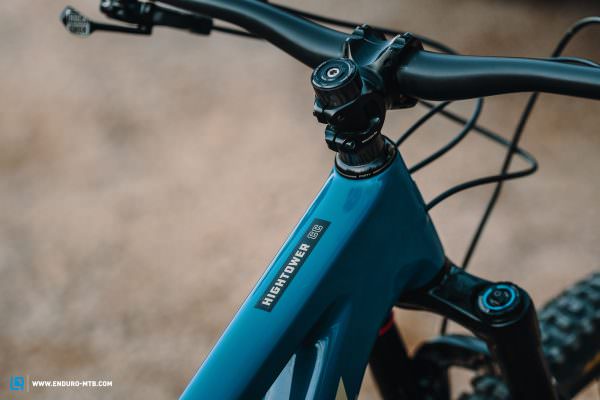
As always, Santa Cruz offer the Hightower either as the light CC or somewhat heavier C carbon frame. Stiffness, performance and durability should be identical on both bikes.
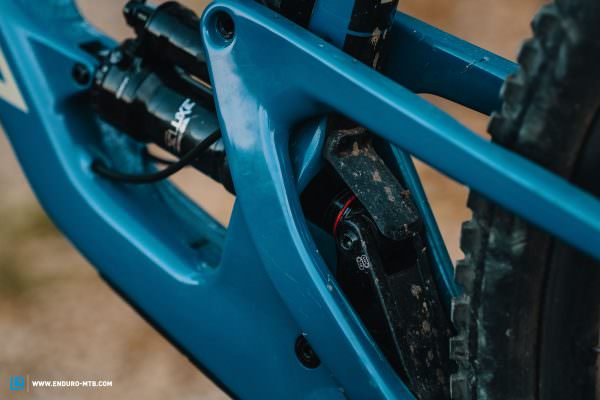
The flip-chip on the Hightower seems superfluous. Even in the low setting, the bike climbs brilliantly and remains well balanced on smooth descents.
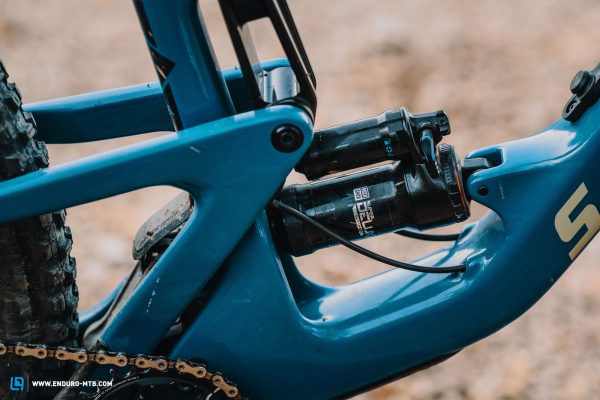
The shock’s shaft is almost completely hidden the frame. It is easy to see how much travel you’ve used, but it’s difficult to read the sag indicator.

Santa Cruz not only want to create bikes that handle well, but also one’s that are as maintenance and hassle-free as possible. Case in point: the threaded bottom bracket.
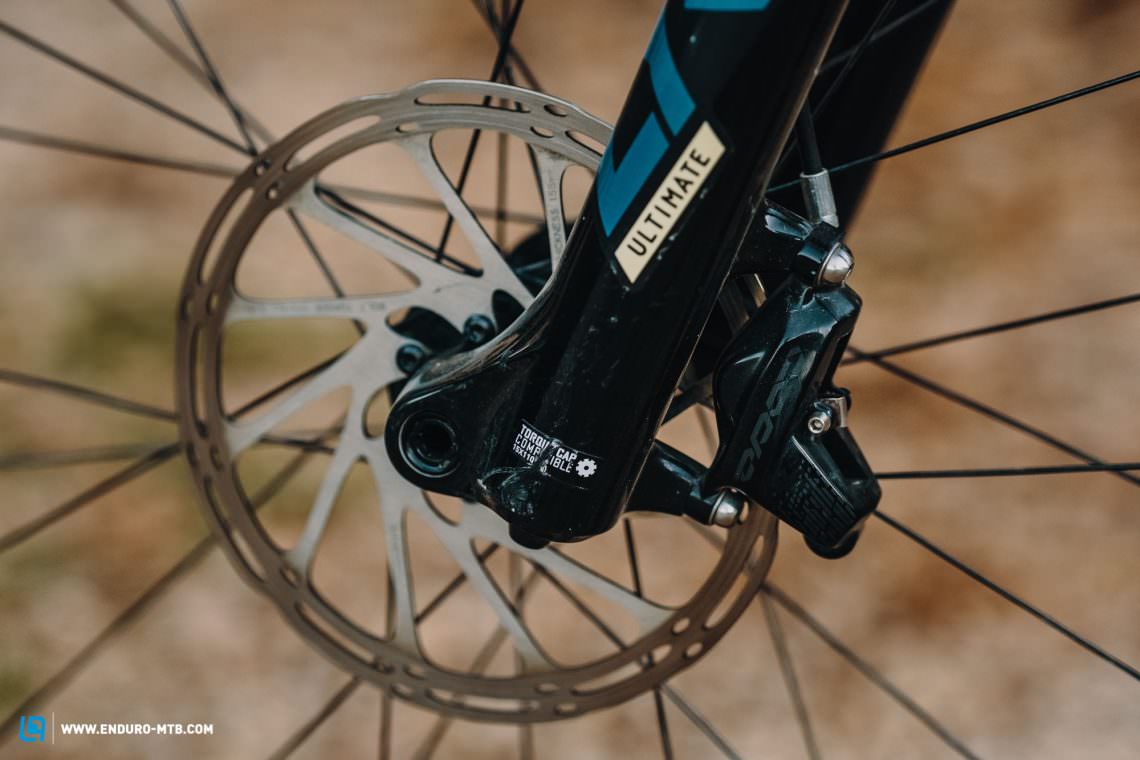
A trail bike needs powerful brakes. SRAM CODE aren’t only powerful, they’re also easy to modulate. Nonetheless, heavier riders should upgrade to larger rotors.
Geometry of the Santa Cruz Hightower CC
A flip-chip on the shock mount allows you to adapt the geometry of the Hightower to suit your preferences. We mostly rode the bike in the low setting. The head angle is rather slack for a trail bike at 65.2° and the 76.3° seat tube angle is steep on paper. Combined with a carefully chosen reach of 470 mm, a bottom bracket drop of 33 mm and 434 mm chainstays, it’s clearly designed to have fun!
Every time you look at the bike, you realise how much attention they’ve paid to the details!
| Size | S (Low/High) | M (Low/High) | L (Low/High) | XL (Low/High) | XXL (Low/High) |
|---|---|---|---|---|---|
| Seat tube | 380 mm | 405 mm | 430 mm | 460 mm | 500 mm |
| Top tube | 567/566 mm | 596/594 mm | 619/618 mm | 646/645 mm | 680/679 mm |
| Head tube | 90 mm | 100 mm | 110 mm | 130 mm | 155 mm |
| Head angle | 65.2/65.5° | 65.2/65.5° | 65.2/65.5° | 65.2/65.5° | 65.2/65.5° |
| Seat angle | 76.7/77.1° | 76.6/77.0° | 76.5/76.8° | 76.3/76.6° | 76.0/76.3° |
| Chainstays | 434/433 mm | 434/433 mm | 434/433 mm | 434/433 mm | 434/439 mm |
| BB height | 340/344 mm | 340/344 mm | 340/344 mm | 340/344 mm | 340/344 mm |
| Wheelbase | 1,179/1,178 mm | 1,208/1,207 mm | 1,232/1,231 mm | 1,261/1,260 mm | 1,296/1,301 mm |
| Reach | 425/428 mm | 450/453 mm | 470/473 mm | 490/493 mm | 515/518 mm |
| Stack | 603/601 mm | 612/610 mm | 621/619 mm | 639/637 mm | 662/660 mm |
The Hightower CC on test
Contrary to what the seat tube angle suggests, the riding position on the Hightower is not as central and upright as on other bikes with similar values. That’s because of the kink in the seat tube, though having said that, you never feel like you’re pedalling the bike from behind. Due to being slightly stretched, the riding position is equally comfortable on level terrain, putting less pressure on your hands and making the Hightower perfect for long rides. You can spare yourself the effort of looking for the climb switch – the Hightower’s suspension doesn’t bob and in combination with the light and stiff wheels, it marches forward willingly. Climbing is fun on this bike, at least as fun as climbing can be.
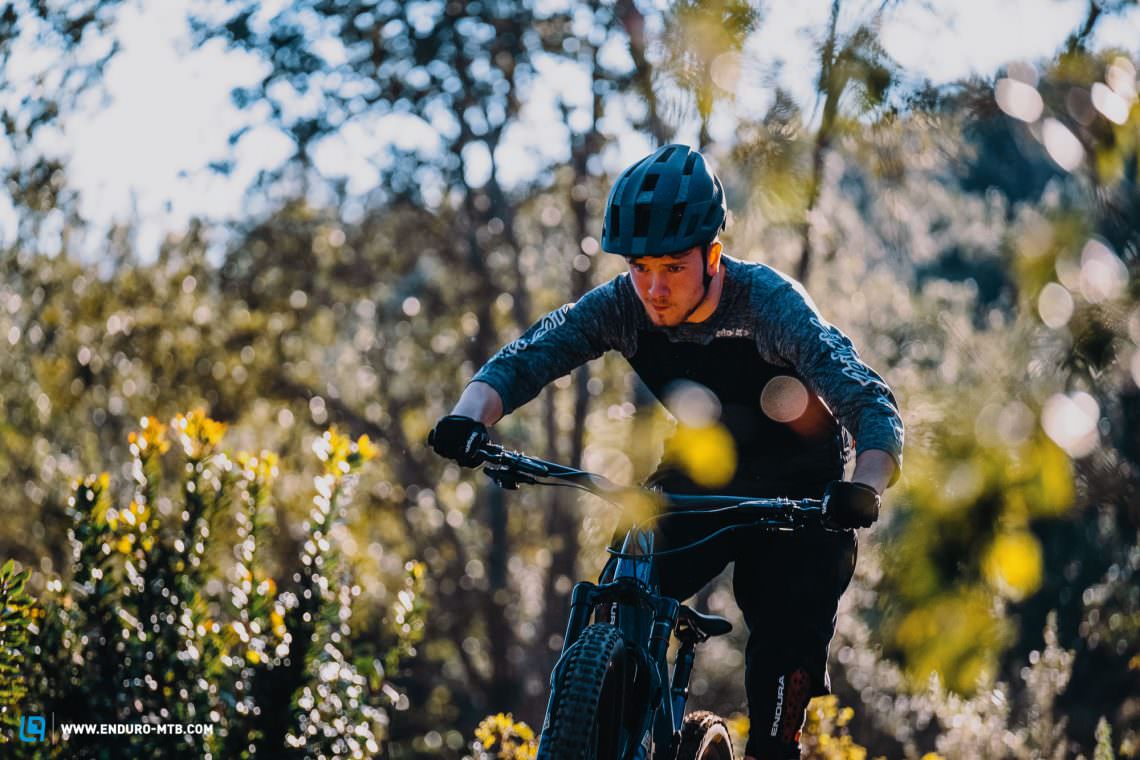
The Hightower is more comfortable flying over obstacles rather than ploughing through them – its firm suspension encourages you to get it airborne at every opportunity!
You’ll also feel right at home on the Hightower when you hit a descent. The suspension performs sensitively but still feels very defined. Although it isn’t the most comfortable or plush ride, it still offers plenty of traction. Instead, the rear suspension offers a lot of support and literally pushes the rider forward. As a result, the handling is very balanced on flat and flowing trails and helps less active riders keep enough weight on the front wheel. But if you want to go really fast on steep terrain, the bike is too front heavy. We advise adjusting the set-up a bit by putting more air in the fork or minimally increasing the sag of the shock. A suspension fork with an extra centimetre of travel would also suit the bike well. The low slung top tube gives you maximum freedom of movement on the bike and thanks to the supportive suspension, it’s a lot of fun to get the Hightower airborne.
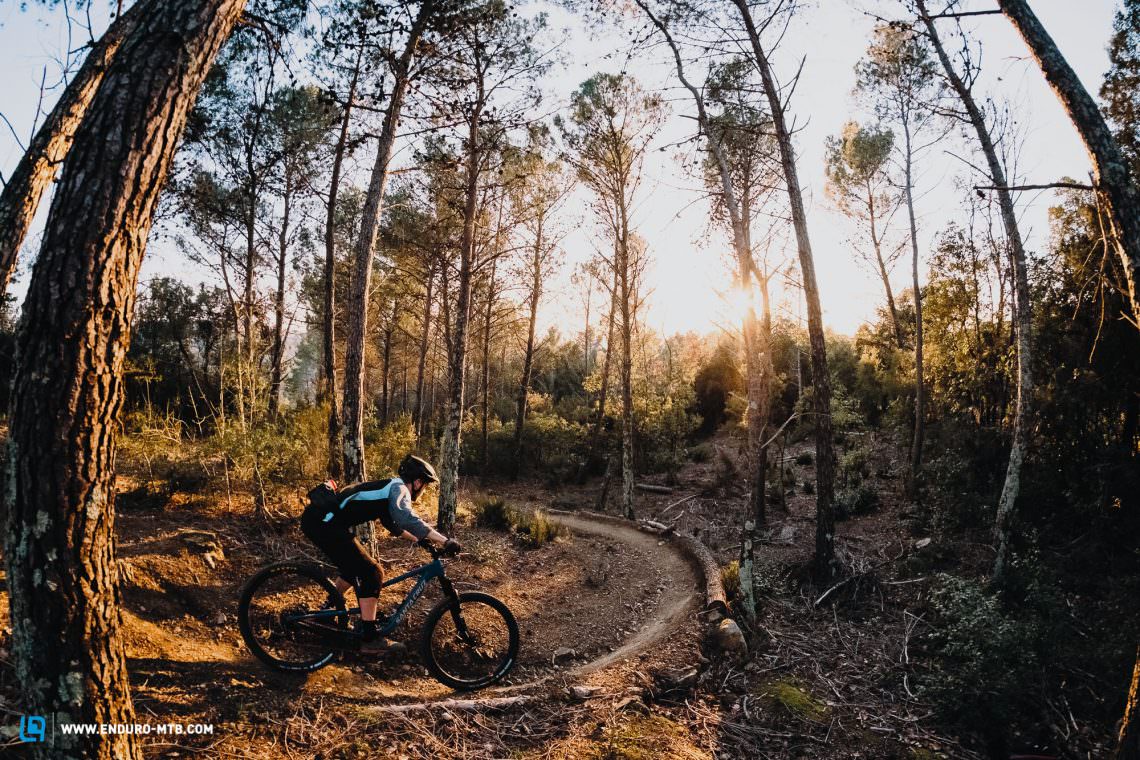


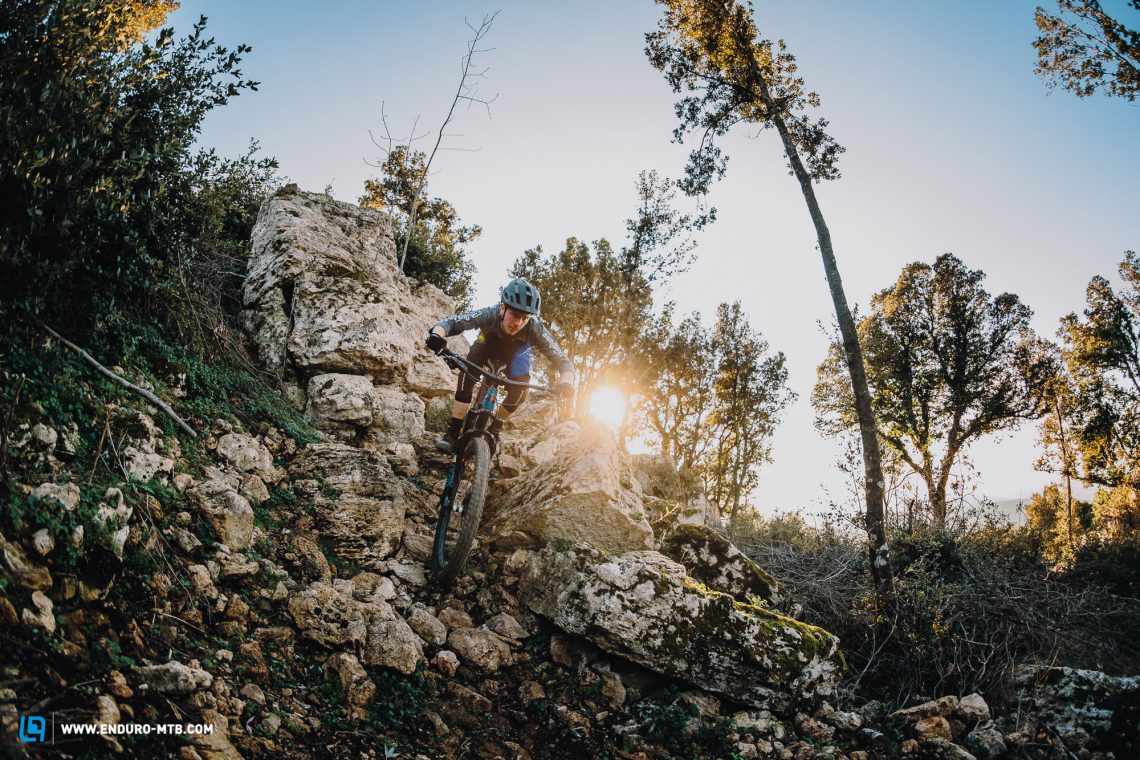
Tuning tips: for those who like fast and rough descents, it would be worthwhile upgrading to a 160 mm travel air spring in the fork | larger brake rotors for demanding descents

How does the Hightower compare to the competition?
Ibis or Santa Cruz? As well as hailing from the same place, both brands are on the shortlist of many rider’s dream bikes. The Ibis is somewhat better on the climbs due to the steeper seat tube angle, while the Hightower’s rear suspension offers a little more traction going uphill. Both bikes are great fun on the descents. The Hightower has the edge on flow trails whereas the Ibis has bigger reserves to tackle demanding trails.
Conclusion of the Santa Cruz Hightower
The Santa Cruz Hightower is an excellent all-rounder and comes extremely close to being the perfect trail bike. It delivers a convincing performance both uphill and downhill with great handling and good suspension. The details on the frame are outstanding and the componentry is beyond any doubt. We would just have liked a little more composure in very rough terrain – but then this is where the Megatower comes into play.
Tops
- lots of fun in every terrain
- direct and playful handling
- high-quality workmanship and a lifetime guarantee
Flops
- front heavy handling in steep terrain
- rear suspension is rather firm
For more information head to santacruzbicycles.com
The test field
Click here for an overview of the best trail bike in test.
All bikes in review: Cannondale Habit Carbon 1 (Click for review) | Canyon Spectral CFR 9.0 SL (Click for review) | Giant Trance Advanced Pro 29 (Click for review) | Ibis Ripmo AXS (Click for review) | Nukeproof Reactor 290 (Click for review) | Norco Optic C1 (Click for review) | Orbea Occam M-LTD (Click for review) | Radon Slide Trail 10 (Click for review) | Scott Genius 900 Tuned AXS (Click for review) | Specialized Levo SL Expert Carbon (Click for review) | Specialized S-Works Stumpjumper SRAM AXS 29 (Click for review) | Trek Fuel EX 9.9 X01 AXS Project ONE (Click for review) | Yeti SB130 TLR (Click for review) | YT JEFFSY CF PRO (Click for review)
Did you enjoy this article? If so, we would be stoked if you decide to support us with a monthly contribution. By becoming a supporter of ENDURO, you will help secure a sustainable future for high-quality mountain bike journalism. Click here to learn more.
Words: Photos: Christoph Bayer, Finlay Anderson, Markus Frühmann, Jonas Müssig









